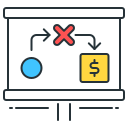Procurement Strategies That Protect the Bottom Line
Lump sum, GMP, unit rate, or cost-plus each shines in specific conditions. Map volatility, design maturity, and market appetite before selecting your route. The right choice reduces claims, smooths cash flow, and makes cost control collaborative rather than combative.
Procurement Strategies That Protect the Bottom Line
Run bids with transparent rules, equal information, and clean addenda. Debrief both winners and runners-up. A fair process invites sharper pricing today and better relationships tomorrow. Share the one procurement practice you would never skip, even under deadline pressure.
Procurement Strategies That Protect the Bottom Line
Write performance specifications that welcome genuine equals, not single-source traps. True alternates reduce cost without sacrificing performance. Invite suppliers early to flag constructability issues and lifecycle costs, so the cheapest day-one option doesn’t become the most expensive long-term choice.










